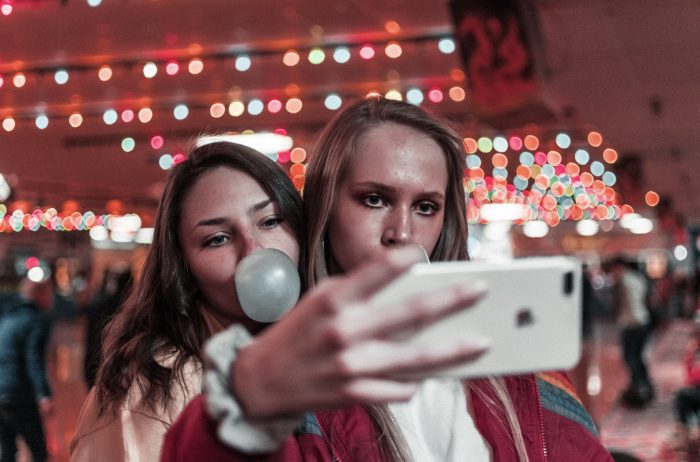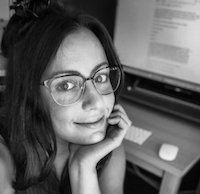A cool wall of air-conditioning drapes over my cheeks and through the seams of my denim jacket as I make my way into the Municipal Museum of Fine Arts, Osaka.
Walking into the quiet space of a museum is always spiritual to me. Today, I follow women in ironed pencil skirts into an exhibit on portraits from the Louvre.
Two wooden painted eyes stare back at me from behind a glass case. Egyptian death masks are meant to let the spirit of the deceased recognize its own body in the afterlife.
Studying the grooves of a wooden nose, I wonder if this is really what this person looked like. But more than anything, I wonder how we went from Egyptian death masks to a selfie generation.
I follow muffled footsteps and faint coughing into the next room. Crossing my arms, I gaze at statues of Napoleon and Diana the Huntress. I walk through halls of oil paintings of big-haired ladies with cherub faces and blankety garments falling from their shoulders.
Aren’t these selfies? Were Marie Antoinette and her friends basically 18th century Kardashians?
I finish the exhibit with the vibrant flower gatherings and fruit arrangements of Giuseppe Arcimboldo. All of those faces bounce through my head as I hop on the JR line home to Osaka-jokansen station.
I open my phone and pull up the photo gallery. My collection of photos is like an episode of “Hoarders”: landscapes, food, selfies, yoga poses, and videos. I have 9,511 photos on my phone. And that isn’t even a real number. I have more than that.
By definition, a portrait is responsible for capturing more than the image itself. It must embody an idea. It must pull a greater sense of who this person actually is into it. It must speak for the body and the soul.
So what do selfies mean to us in 2018? And why do they navigate such a fine line between portrait art and self-obsession?
As I scroll through these thousands of photos in my gallery, they don’t seem to hold much value compared to an Egyptian death mask. Where is my soul speaking its truth when I stand in the bathroom mirror holding my phone?
I don’t know if I make the best decisions about posting photos on social media. But over the past year, through Elephant Academy, I’ve learned a lot about the difference between using social media and social media using you.
When I feel lost about about posting on social media, I ask myself a few questions:
What am I looking for when I post this?
Do I need love?
Do I need likes?
Do I want to feel seen?
Do I need reassurance?
Sometimes it is all of these things. Sometimes it is just wanting to know if I am okay. And this is when I really need to step away and get off of my phone.
The clear distinction, for me, between a self-portrait and self-obsession, is when it shifts from a statement to a question.
Most of the time, when I am turned off by someone else’s photo, what I see is a big question mark. I see someone who is asking, “Am I enough?”
We are all familiar with the dead feeling that comes from seeing too many smiling photos. But are we familiar with the crying and angry pictures that attempt to show the wide spectrum of emotions? These can also be self-obsession.
We do not need to cry our eyes out and snap a photo mid-cry about something that we are clearly not over yet. This is milking vulnerability. It is an abuse to us and to our audience.
Vulnerability is fair. It does not cut anyone off or over serve anyone. It is raw and real. It is in the moment. It does not take our crying faces and put them on display so that we can ask that same question: am I enough?
Instead, it takes our red puffy eyes, and, like the first calm breath after a storm, it lets us stare into the camera and say very clearly: Yes, I cried my eyes out and I am still enough.
This is a statement of truth that might actually hit home for another person instead of turning heads like a bad car accident. When we come back to an emotion from a place of stillness, we can talk clearly about our experience—we can connect.
Am I saying that 18th century oil paintings and our profound Instagram selfies are on the same level? Possibly.
After digesting my day at the museum, I let the quiet impulse to post something online dissolve with my breath. It doesn’t seem as urgent all of a sudden.
I have work to do right here that can’t be found online. I put my phone out of sight and follow an evening vinyasa class on Yoga Glo.
In this selfie generation, we need to hold on to what is real. If we can take what we are learning in our own worlds and project it into something that connects with someone else—this is a win.
Maybe we can reconsider the conversations we’re having with our selfies. We can switch from asking and wanting to sharing and giving. Maybe that’s what a portrait really is. A giving thing. A story that connects.












Read 1 comment and reply